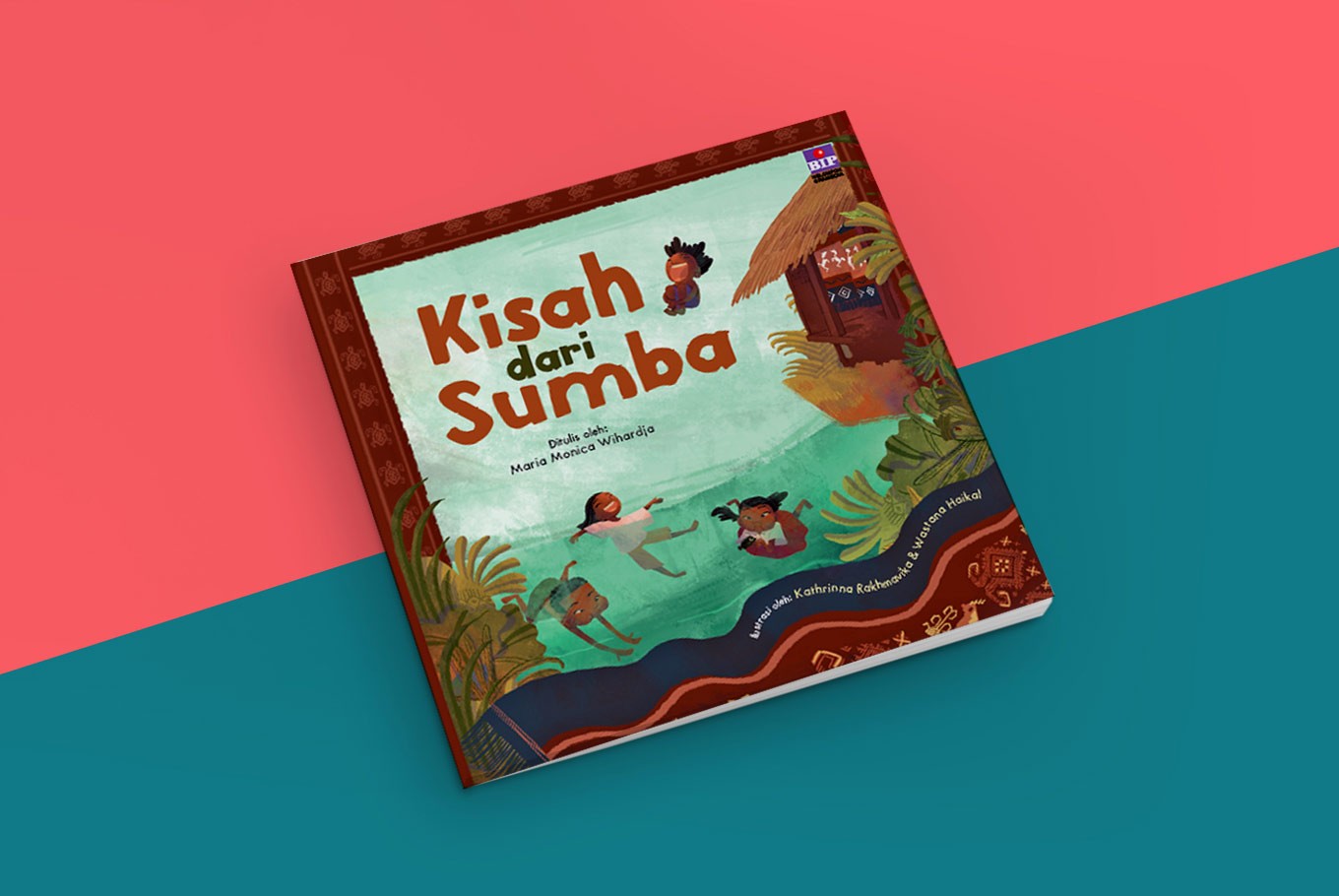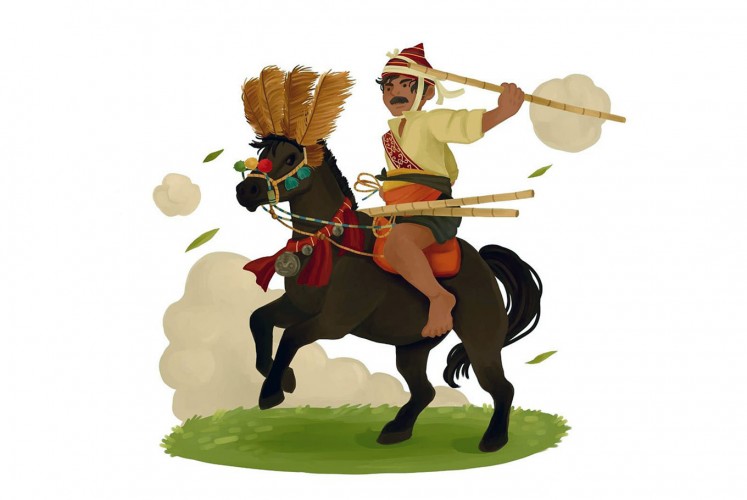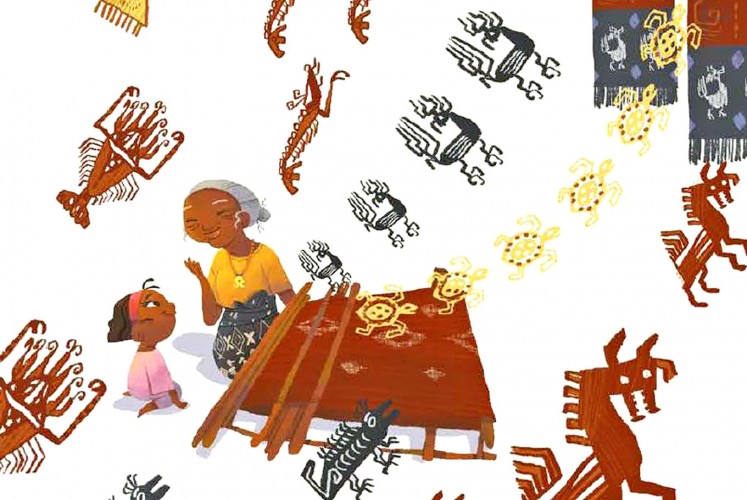Popular Reads
Top Results
Can't find what you're looking for?
View all search resultsPopular Reads
Top Results
Can't find what you're looking for?
View all search results'Kisah': Tells tales for and by children
A newly released book, Kisah Dari Sumba (Stories from Sumba), is more than a worthy follow-up to the Kisah series, with even more intriguing tales for and by kids.
Change text size
Gift Premium Articles
to Anyone
K
isah Dari Sumba (Stories from Sumba) aims to introduce Indonesian children from different parts of the archipelago about the culture and traditions of Sumba in East Nusa Tenggara, creating a sense of togetherness that is at the center of the country’s motto Bhinneka Tunggal Ika (Unity in Diversity).
The latest book in the Kisah series is a follow-up to 2015’s Kisah Dari Alor and last year’s Kisah Dari Banggai.
Spearheaded by Maria Monica Wihardja and Hanny Kusumawati, the series collected stories told by the islands’ children, with added illustrations by Thalia Lembong.
The first title in the series, Kisah Dari Alor, was specifically born out of a “leisurely field trip” made by Maria in 2013. Hanny, a communication consultant, joined the trip in order to help Maria tell stories to children of the Alorese in East Nusa Tenggara.
Maria and her team found themselves being greeted warmly by the 25 to 30 children in Kalabahi, Alor’s capital. They were told of the visit and eagerly awaited the story-telling session.
“We were taken by a local teacher to a house in the village where the children were already waiting for us to hear the stories,” Maria recalled.
Hanny, who was in charge of most of the activities that evening, began regaling the children with stories. Most were primary school students.
“We started the story telling night by introducing ourselves and then the kids had to also tell us about their dreams and what they would like to become. After Hanny told a couple of stories, we asked the children to recite them back to us and then write their own stories. We collected their stories, which we then brought back to Jakarta,” Maria said.
Hanny came up with the idea of rewriting some of the most interesting stories and turning them into a children’s book. Proceeds from the sales of the books were funneled back to the children in Alor.
Play of color: The book transforms real photos into colorful illustrations. (Gramedia/File)More than simply a clever idea and concept, however, the book came out of Maria’s personal passion for showcasing Indonesia’s richness in diversity.
“If I have children, I would want my children to know how big and diverse Indonesia is. I came to learn this a bit too late and I wished I could have celebrated this diversity when I was younger,” Maria said.
“Luckily, I grew up in an internationally diverse school environment abroad so even though I learned it late, I was always open to a diverse Indonesia,” she added.
For Maria and Hanny, the hope is that the book project, in some small way, will bring Indonesia’s children closer together through learning about each other’s cultures.
“Would not children in Aceh want to know what children in Papua do after school, and vice versa? About their dreams and their local heroes? Their parents and friends?” Maria asks rhetorically.
“By bridging and filling these intercultural and interregional information gap, the children can grow to learn about each other -- avoiding any misunderstanding and breaking any deep-rooted bigotry that often exists among cultures, ethnicities and religions.”
For and by kids: Kisah dari Sumba is a children’s book based on stories told by children from the island. (Gramedia/File)Unlike Alor, Kisah Dari Banggai was written by Indonesia Mengajar voluntary teachers who teaches on the remote islands of Banggai for a year.
The focus on Sumba this time around is also personal, and involves something more upsetting. Having gone to Sumba for the first time 2016, Maria saw children with pot bellies, which introduced her to stunting (chronic malnutrition in children).
Her research introduced Maria to a medical report by Saleha Sungkar, a professor from the University of Indonesia who conducted research on the prevalence of Intestinal Parasital Infection (IPI) in Kalena Rongo village, which is located close to Mandorak Beach.
Maria visited the professor to learn more about the illness as well as how widespread it was on the island. She gathered a team of personal friends who had skills to contribute to the cause, including nutrition experts; a local legislative member; a water and sanitation expert and singer Andien.
The songstress helped Maria with crowd-funding, which was needed to conducted various activities related to the deworming program, as well as access to water and sanitation. They also contacted the national program on access to clean water and sanitation to accelerate the programs in the area.
Maria did more than just that. During her one-year stint at the Executive Office of the President in 2017, where she was co-leading the work on stunting, she and a colleague flew back to Sumba to ground-check the government’s deworming program in Kalena Rongo.
During that working trip, using the funds she had successfully crowd-funded, she asked Ariyo “Kak Aio” Zidni -- a popular local children storyteller who also heads the story-telling-encouraging movement Ayo Dongeng Indonesia -- to join and help her read stories about stunting and sanitation at a primary school in Kalena Rongo. It was a success, with the Health Ministry issuing a circulation letter to all governors, regents and mayors to take the deworming programs more seriously.
“From these three trips, I felt confident to write a children’s book about Sumba. The stories have a deep meaning, including a story about stunting.”
The illustrators -- Kathrina Rathmavika and Wastana Haikal -- also flew to Sumba in order to experience the island directly.
For the creators, their hope is for readers to fall in love with Sumba as much as they did -- eventually leading them toward discovering more of Indonesia’s less-celebrated beauty spots.
“There is no place in Indonesia and the world like Sumba. That’s what keeps me wanting to go back and preserve its uniqueness, especially the Pasalo tradition, the Marapu belief, the handwoven ikat clothers, and the beautiful nature. Hopefully, the book adds another dimension to Indonesian diversity.”













